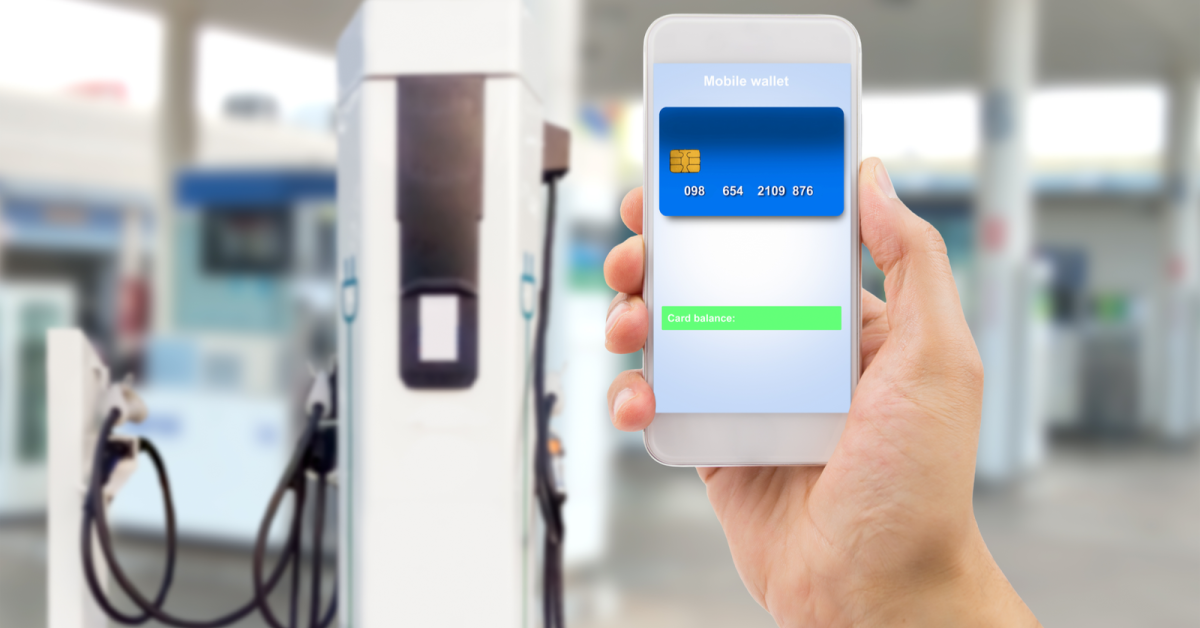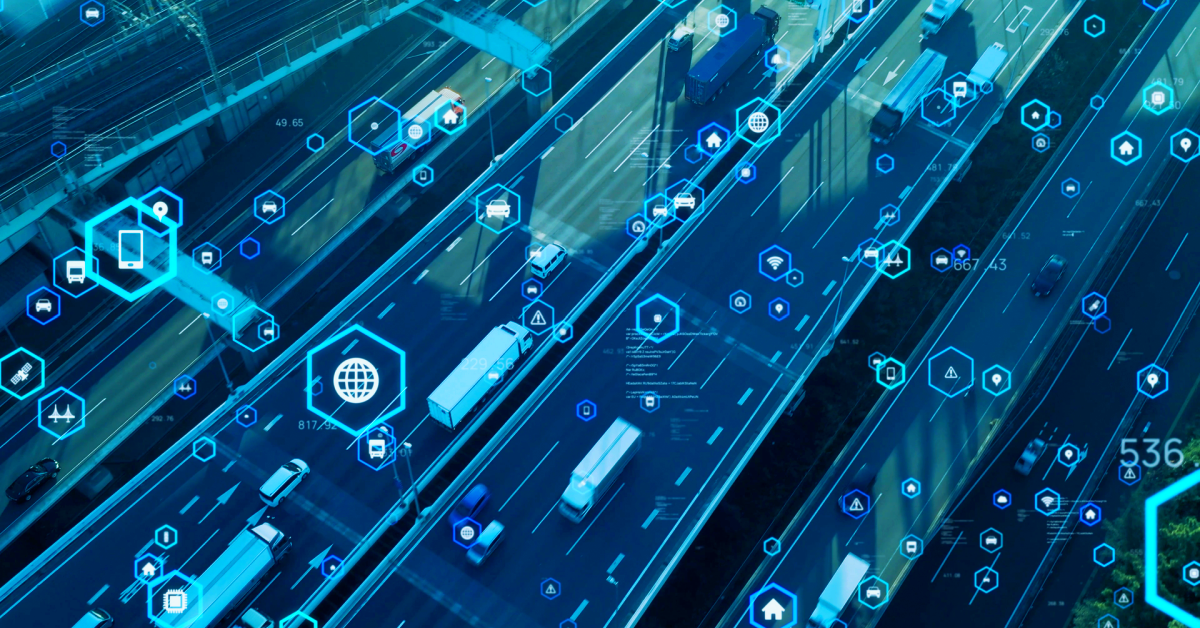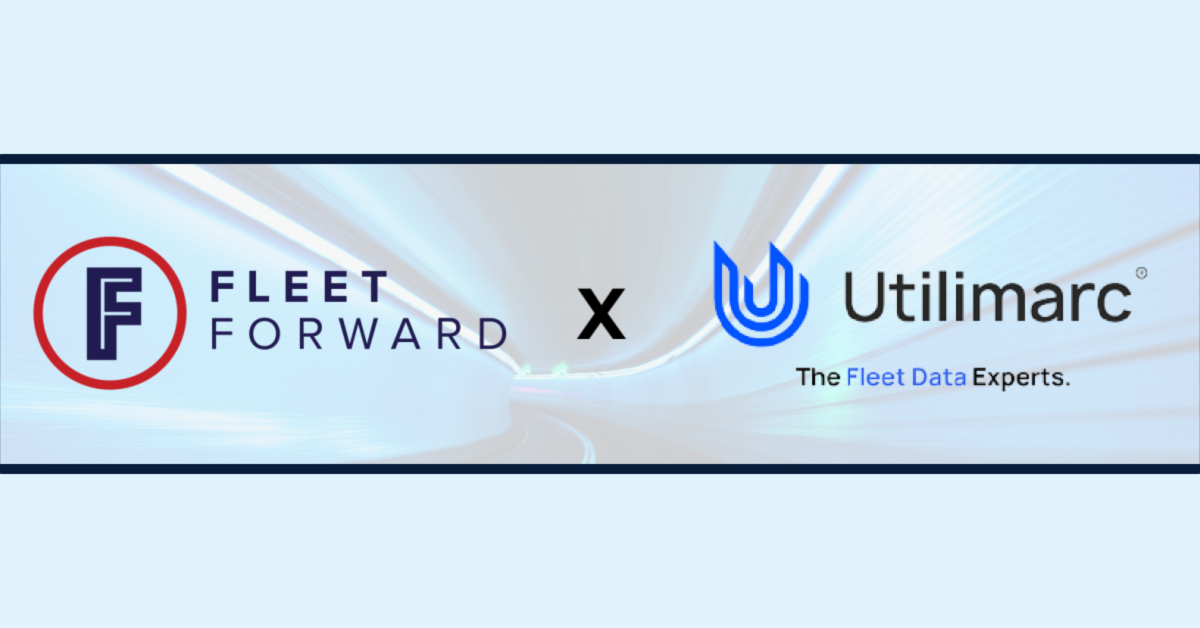
How and When Did Fleets Begin to Use Fuel Cards?
In today’s episode of Fleet FYIs shorts – we’re tackling a pretty common “tool”, I guess you could call it, for fleets. We’re talking about fuel cards. More specifically, the history behind fuel cards, why they’re used for fleets and how they first began to become a popular tool.
A fuel card or fleet card is used as a payment card typically for all types of fuels at gas stations or filling stations. Whilst most fleets use these for fuel (hence the name, fuel cards) fleet cards can also be used to pay for vehicle maintenance and expenses at the discretion of the fleet owner or manager.
But wouldn’t you think that a standard credit or debit card could also suffice?
The answer is no – not really.
How and When Did Fleets Begin to Use Fuel Cards? | Fleet FYIs Podcast, Season 2 Episode 30
Gretchen Reese (00:06):
Hey there. Welcome to Fleet FYIs, the weekly podcast by Utilimarc that reveals how you can make the most of your data for smarter fleet management. My name is Gretchen, and every week you’ll hear from me and some of the industry’s finest in candid conversations that will shed some light on not only two decades worth of data insights, but some of the industry’s hottest talking points and key metric analysis with the aim to help you better understand your fleet from every angle.
Gretchen Reese (00:33):
But before we begin, if this is the first time you’ve heard our show, thanks for stopping by. I’m so glad you decided to come along for the ride with us, but I’ve got a quick favor to ask you. Once you finish today’s episode, if you could take a few minutes to leave us a review on your favorite podcasting platform, we would really appreciate it. Give us a rating, five stars I hope, (laughs) or tell us what you liked, or leave us a comment or a question about what you heard in today’s episode. But if we haven’t yet covered a topic that you’re interested in hearing more about, let us know. We would be happy to go over it in detail in a later episode. If that sounds good to you, let’s get back to the show.
Gretchen Reese (01:17):
Hello everyone, and welcome back to another episode of the Fleet FYIs podcast. I hope you’re all doing well today. It’s really nice to chat to you guys on a Monday for once now that we’re actually getting into the cadence of a new Shorts episode every Monday and your usual longer episodes every Thursday, which don’t get me wrong, I still love doing, but the Shorts are kind of a nice variable break every now and again. In today’s episode of Fleet FYIs Shorts, we’re talking about a pretty common tool, I guess you could call it, for fleets. And by that, I mean we’re talking about fuel cards, more specifically I should say, the history behind fuel cards, why they’re used for fleets, and how they first began to become a pretty popular tool that’s used pretty widely today.
Gretchen Reese (01:59):
And as a self-proclaimed history nerd, I couldn’t help but want to answer this question after I saw it pop up in a LinkedIn forum, so here we are. And if you’re ready for a short history chat, because I know I sure am, let’s dig in, shall we? So let’s start with the basics. What exactly is a fuel card? Now, I know I’m sure probably all of you listening to this show, especially, you know… It’s Fleet FYIs. It’s a very niche podcast. I’m sure you all know exactly what it is, but just for the purpose of our history chat, let’s dig into the basics here.
Gretchen Reese (02:43):
A fuel card, or sometimes called a fleet card, is used as a payment card typically for gasoline, diesel, or other types of, you know, petro-based fuels or renewable fuels at gas stations or filling stations. Right? And whilst most fleets use these for fuel, you know, hence the name fuel cards (laughs), fleet cards can also be used to pay for vehicle maintenance and expenses at the discretion of the fleet [ownager 00:03:06]… Oof. (laughs) That was a bit of a bad flub up for me. Fleet manager or owner is what I meant to say there. Um, I would blame it on jet lag, but I returned back to the US about a week ago, so I don’t think I can use that as an excuse anymore. But I digress. (laughs)
Gretchen Reese (03:22):
They can be used at the discretion of a fleet owner or a manager, but I think what a lot of people were asking themselves is, do you think that a standard credit card or a debit card could also suffice? Well, in many ways the answer is no, not really, because these fuel cards are unique due to the incredibly convenient and ultra-comprehensive reporting that tends to accompany their use. So they enable these fleet owners and these fleet managers to receive real-time reports and set purchase controls with their cards, which can actually prove incredibly helpful right around the time that, uh, um, budgets tend to come out or expense allowances are set every single year, helping them to stay informed of all business-related spending, um, you know, on expense reports.
Gretchen Reese (04:11):
Now, fuel cards can be provided by a few sources. Obviously, you know, you couldn’t go to your bank and ask for one, you know, like your American Express or that sort of thing, but if you go to a brand like Shell or Chevron, Exxon Mobil, you know, large international oil companies, and also by companies that specialize specifically in providing fuel cards, like Edenred, Wex, Comdata, FleetCardsUSA, Petrol Plus Region, and Fuelman. These are just a few examples. Obviously there are certainly more, but we’ll delve into this in a longer fuel card-based episode. But just so you get the gist of it, there’s plenty of providers, and they’re not just a standard credit card like you or I would use, you know, at a grocery station or a gas station to fill up our personal vehicle with fuel.
Gretchen Reese (04:57):
Now, initially in the United States, if we look back to the beginning of these fleet or fuel cards, the beginning of fuel cards can be traced back to the 1960s and the 1970s when something called a key stop or a key lock or standalone card locks were actually used by, um, independent sources and filling station owners. Now, a key stop or a key lock fuel control system, um, was a system where a group of commercial fleets could access a fuel pump with a unique key that tracked solely their gallons through that particular pump if they were filling up all of their vehicles.
Gretchen Reese (05:32):
Now, this technology is just a bit outdated, especially for 2021, and hasn’t been commercially available for the past few decades or so, but for those of you that entered the fleet industry after these had been phased out, a card lock control system actually used a punch card or a magnetic stripe card to uniquely identify a fuel buyer on a private server. This was done to avoid your typical credit card interchange fee, which raised the cost of fuel considerably. So, you know, if you use your credit card at a smaller business, sometimes they still have that transaction fee. That’s what we’re trying to avoid there, or what they were trying to avoid.
Gretchen Reese (06:08):
But when we look at the first commercial fuel cards, they actually typically resembled a credit card with a name and a company logo on them. The difference is, is when a customer entered a filling station, the cashier would take down the customer’s name and the company information to authenticate the ownership of the card, and this process was actually pretty time-consuming and very vulnerable to fraudulent transactions. Now, with the integration of computers and computer software kind of around that 1980s timeframe, the development of the fleet fuel card industry expanded quickly. The, the growth was almost explosive.
Gretchen Reese (06:45):
And the invention of that magnetic stripe, which you will still see on credit cards and debit cards today if it’s not one of those, uh, contactless card payments… Actually, I think some of the contactless cards still do have the magnetic stripes. Um, but those and then the magnetic card reader allowed petroleum marketers to control fuel pump transactions, which led to today’s wide range of fleet card security features and state-of-the-art reporting systems to track all fleet expenses that are used on that particular card. Now, if we look at another country, you know, so let’s take, uh, the UK for example, fuel cards were only printed with the company name, vehicle registration, and a signature strip on the back side, so slightly to those that were in the US, um, but not by much.
Gretchen Reese (07:29):
And it was similar in the sense that little to no electronic data were stored, um, so fueling sites would, again, verify the company, and they would verify the employee name, but also the registration against the card and the written signature on the back. Now, the site would then allow access to the fuel once the retailer’s receipt had been signed for and cross-checked against the signature written on the back of the card. So again, there’s your timely process that was very, very manual and vulnerable to fraudulent transactions again. And to be honest, if we take a look at even just the network for fuel cards, they were initially pretty small, and they were based around trucking roads and main hauling routes, which, you know, if you think about it, it’s pretty smart to do that, but it also didn’t make them a very common, um, a very common payment method that was used.
Gretchen Reese (08:21):
Now, a few years later, the cards became embossed rather than printed, and this change was actually implemented to provide the cards with greater longevity, where I initially would have thought that this probably would have been implemented for a security feature, but in fact it was greater longevity. You know, previously, if you just had the printed cards, as I’m sure you know with any type of paper, um, card or access pass that you don’t have, say, laminated or in a protective holder, frequent use tends to rub off the printed information. I mean, that’s just pretty standard. Or, you know, something gets too bent and you can’t read it anymore.
Gretchen Reese (08:54):
Well, you know, cards that were embossed now no longer had that problem. But due to the lack of electronic data on the fuel cards at this stage, transactions were still being recorded by the card being stamped onto a manual transaction sheet. Now, I don’t know about you, but I haven’t seen any of those manual card stamping devices in a long time. I think the last time I saw one was maybe when I was about 10, and I won’t tell you how long ago that was. But further details, such as date and time, volume, fuel grade, registration, all of that would be hand-written. So again, we’re looking at a very manual process here.
Gretchen Reese (09:32):
Now, kind of similar to the US in this sense, uh, during the mid to late ’80s, fuel cards began to use this magnetic strip technology and integrating computers, computer software, like I said previously. And this meant fuel cards could be processed by a retailer electronically, and it also reduced the risk of human error when recording transaction details. That piece is really important, so that means it basically, it decreased the vulnerability to fraudulent transactions by a pretty high percentage. And magnetic strips also enabled fuel cards providers to increase fuel card security by ensuring, um, pin numbers or, you know, personal identification numbers were encoded into the card.
Gretchen Reese (10:13):
For outdoor payments, kind of similarly to, um, petrol stations, gas stations, filling stations, whatever you call them, um, that you use today, you know, if you’re paying with a debit card, odds are you’re gonna have to use a four-digit pin number if you’re paying outside rather than inside on one of those transaction readers. But, you know, in the 1980s, these pins were essential to compete, to complete a refueling transaction. You couldn’t complete a transaction outside, away from the filling station attendant, without one.
Gretchen Reese (10:44):
Although I will say, fun fact for you, and this I found particularly interesting. When you swipe your magnetic strip through a fuel card reader or through a card reader in general, I don’t know if you knew this, but the transaction is still only verified by checking signatories to this day. It’s not pin number or anything like that unless you insert a chip or you utilize contactless. It’s all done by, uh, checking the signature on the back and utilizing that magnetic strip. Kind of cool, don’t you think?
Gretchen Reese (11:26):
But anyways, getting on to the point of why do fleets actually use fuel cards in the first place. Well, commercial fuel cards are designed with fleets in mind, of course, right? That makes sense. And they seek to avoid both the percentage, um, upcharges that many credit card companies impose, as well as the theft risk that retail credit cards expose a business to due to their focus on convenience over financial security. It makes sense. Typically, the majority of businesses using fuel cards are those which rely heavily on the use of vehicles on a day-to-day basis, so, you know, of course fleets are in there. (laughs)
Gretchen Reese (11:59):
Think, like, transport, haulage, courier, utility, or construction services. Obviously there’s plenty more, but those are just the top five industries that are right off the top of my head. And one of the primary reasons that organizations use fuel cards is to obtain potentially significant savings on the current price of fuel and on administrative costs. Um, some businesses receive a single weekly invoice, or sometimes they pay in bulk for the entire year. You know, it completely depends on the organization. But it also… And this is the biggest thing, I think. It replaces the manual reconciliation of individual paper receipts, which for larg- larger organizations, could number in the hundreds each week depending on how many vehicles you have, depending on how many drivers you have.
Gretchen Reese (12:43):
It could add up pretty quickly. And again, with that manual task reporting, trying to cut down on it, it makes it a little bit more streamlined and a little bit easier to handle. And in most cases, fuel cards can actually provide fuel at a wholesale price as opposed to the standard retail price, which is what you or I would pay if we were filling up our own personal vehic- vehicles at a fueling station. And this way, which is also kind of handy for organizations on the larger scale, discount fuel can be purchased without needing to buy in bulk, which would be that advanced purchased and storing it on lot, so that’s kind of helpful too.
Gretchen Reese (13:29):
Either way, whether you are a startup or a growing established organization with a fleet, a fuel card can provide a range of benefits. (laughs) This I’m sure we all know by now. But I’m curious to know. Did you know the history of fuel cards, or at least this very brief rendition of them, before listening to this episode? Let me know your thoughts. Send me an email, tag me on LinkedIn, or create your own post using the hashtag #UtilimarcFleetFYIs. If you’ve got any questions on today, about today’s show or a general question on fleets themselves, please, please, please send it my way. You never know. It may just find its way onto an upcoming episode of Fleet FYIs. But anyway, until Thursday, that is all from me. Make sure you mark your calendars and tune in, because Thursday’s episode is going to be a good one. I can guarantee that. Ciao.
Gretchen Reese (14:16):
Hey there. I think this is the time that I should cue the virtual high five, because you’ve just finished listening to another episode of the Fleet FYIs podcast. If you’re already wanting more content, head over to Utilimarc.com, which is Utilimarc with a C, U-T-I-L-I-M-A-R-C dot com, for the show notes and extra insights coming straight from our analyst to you. That’s all from me this week, so until next time, I’ll catch you later.
If you or someone you know is interested in appearing on the Fleet FYIs podcast, please email our content manager for more information.


